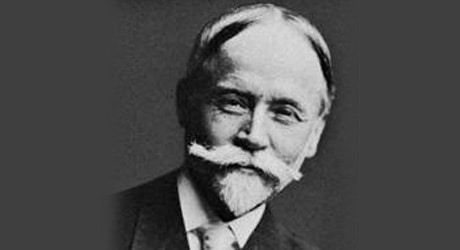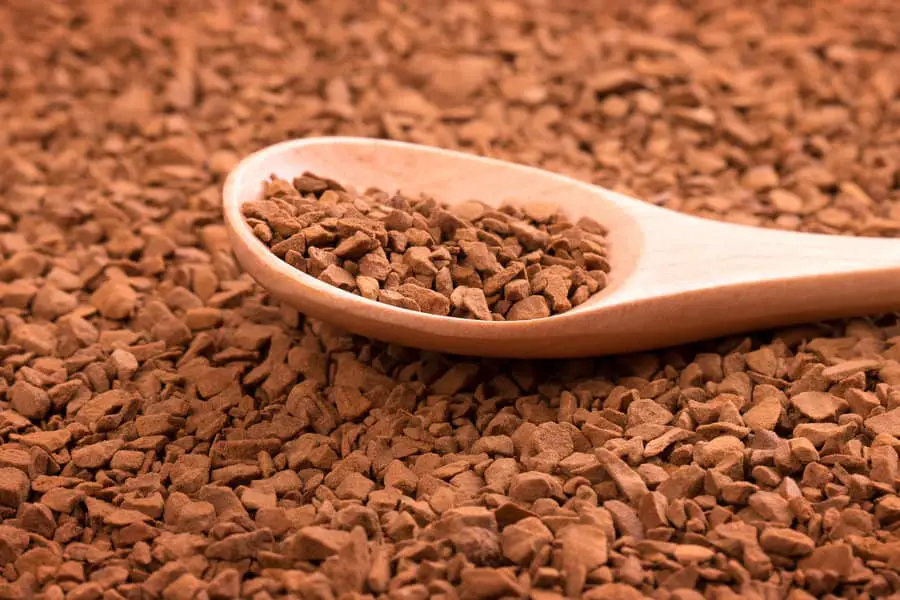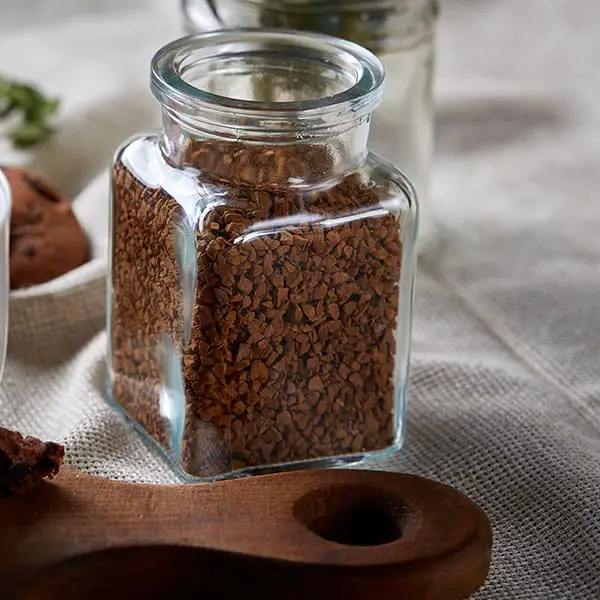
We’ve all been there, perhaps you hit the snooze button too many times and overslept, or perhaps you had a crazy amount of work to just simply didn’t have time to grind those lovely single-origin beans.
So, you reached for that old faithful tub of Maxwell House to get a quick caffeine fix. But have you ever paused for a moment to wonder how such an easy cup of joe came to be?
In this post, we’ll explore the origins and history of Instant coffee and uncover the interesting story behind arguably one of the largest innovations ever in the coffee industry.
Before we do that however, it’s worth considering what exactly it is we’re talking about when we say ‘instant coffee’
What is Instant coffee?
In a nutshell, instant coffee is made of coffee flavor crystals that require only hot water to dissolve into.
There is no filter or brewing process involved, just a standard spoon or satchel of coffee crystals, that we all know so well.
The process that goes into creating your cup instant joe is an impressive feat is accomplished by a somewhat complex process.
It starts with green coffee beans that roasted and then finely ground, in much the same manner as any other form of coffee.
However, then the beans are hit with piping hot, highly pressurized water. This brews the coffee grinds and extracts the oils and compounds into the water.
This unconventional brewing process is followed by an evaporation phase which increases the liquids coffee content. Finally, the concentrated brew is freeze-dried, before being broken into the small pieces that are often referred to as “coffee crystals”.
These crystals will remain stable for a very long time and all you need to is re-hydrate them to get a cup of instant coffee.
Where Did Instant Coffee Come From?
The exact origins of instant coffee are not entirely clear. Some documents show that versions of instant coffee may have been manufactured as early as the 1850’s.
There are reports of soldiers fighting in the civil war using a ‘cake form’ of coffee to keep their spirits up on the battlefield.
However, historians believe that the predecessor to modern day instant coffee was independently create by three people in three different countries between the years 1880 -1901; a Frenchman by the name of Alphonse Allais, a New Zealander by the name David Strang and an American by the name of Satori Kato.
Kato introuced his early version of instant coffee at the Pan-American Exposition in Buffalo, New York sometime between 1901 and 1910. Kato had modelled his method on the experience he had gained while working in the tea industry – in which he was attempting to pioneer a product that would make ‘instant tea’.
Washington’s Coffee

However, Kato’s product was ultimately unpopular. It would take an entrepreneurial man by the name of George Constant Louis Washington, who saw that the demand for a cup of instant was there, all that was needed was to develop a product that people could drink.
In 1909 he marketed his first product under the name “Red E Coffee” and then later re-branded as “Washington’s Coffee, under the “G. Washington Coffee Refining Company” one year later in 1910.
The company took an interesting advertising approach to market the product: they claimed that their instant coffee was more modern and purer than it’s brewed equivalent.
While this idea may sound strange in modern gastronomical circles where unprocessed, organic foods are upheld as the ideal for consumption, the idea that processing foods made them healthier for humans to eat was quite common in the early 1900’s.
To give you an idea, have a read of this excerpt from ad by Washington’s coffee in The New York Times on January 2nd, 1922
“Do you know coffee? Do you know that there are millions of people who have stopped using the ground bean coffee? Back yonder everyone used whole brown sugar – without refining – now everyone uses refined, white granulated sugar.
In the same way, millions have stopped using bean coffee, with its messy grounds – and are using refined coffee, made by Mr. G. Washington’s special refining process.
G. Washington’s coffee is just as superior to whole bean coffee as modern white sugar is to old-fashioned brown sugar, and you put it in the cup just as you do the sugar. It dissolves instantly when you add water.”
While Washington’s Coffee was certainly more popular than previous iterations, the taste was still somewhat disagreeable, and consumers still viewed his product as a novelty rather than as a replacement for their traditional brew.
World War I
Indeed, instant coffee may have simply just remained as novelty drink had it not been for one of the 20th centuries defining events – World War I.
While Washington’s instant coffee couldn’t dissuade the average consumer away from their normal cup of coffee, his product was ideal for soldiers who were fighting on the front.
Coffee was seen as being valuable to soldiers not so much because of the taste, but because of the caffeine boost it provided, and Washington had just provided the military with a convenient way to deliver that boost.
By 1917 when the US entered the war, Washington has shifted his entire production to the war and American military use. Instant coffee became hugely popular amongst soldiers.
Each enlisted man was supplied with a quarter ounce of double strength coffee in each food ration.
The troops nicknamed it “a cup of George” and would drink it both hot and cold.
As the war dragged in, the demand for instant coffee kept on rising and other manufacturers began to pop up. By the final year of the war the demand for coffee was estimated to be six times the national supply. It was indeed a great time to be in the business of instant coffee.
So popular it was indeed that soldiers began to write about it in their letters. “I am very happy despite the rats, the rain, the mud, the draughts, the roar of the cannon and the scream of shells” wrote one solider in 1918. “
It takes only a minute to light my little oil heater and make some George Washington Coffee …Every night I offer up a special petition to the health and well-being of Mr. Washington.”
When the soldiers started to return home from the front, many of those who had not fought in the war – primarily women & children saw these brave men drinking Washington’s coffee.
In the same way that the fashionable male hairstyles of the 20’s & 30’s were influenced by the troops, Washington’s instant coffee started to become trendier with those seeking to emulate their heroes.
World War II & Beyond

It was not long before World War II rolled around and again created an intense demand for instant coffee, however by this stage other companies had sought to capitalize on the lucrative opportunity, and Washington’s Coffee had lost a considerable amount of market share.
The most notable of these competitors was a company that had developed a more advanced refining process that produced what many considered to be a superior product to Washington’s Coffee – that company was name Nescafe.
The Nescafe Chairman had been approached by the Brazilian Coffee Institute in the 1930’s and asked to develop coffee that was soluble in hot water and retained its flavour.
At the time, Brazil had a huge coffee surplus and it was felt that coffee consumption would increase if a new product was developed. After seven years of painstaking research at the Nestlé research centre laboratory in Switzerland, scientist Max Mortgenthaler finally achieved the desired results.
The process involved drying equal amounts of coffee extract and soluble carbohydrates and produced a palatable cup of coffee that quickly became very popular.
Nescafe became so popular in fact that it became the staple beverage of the United States armed forces during World War II. In fact the entire production of its U.S. plant, about a million cases a year, was reserved for military use only.”
It would not be until post World War II that the next breakthrough in instant coffee would come.
During the war an organisation called the National Research Corporation or NRC for short, were developing methods for freeze-drying medicinal products for wartime use such as blood plasma and penicillin.
The NRC had multiple contracts with the military, however when the fighting ceased, these soon began to be redundant. They began to apply their methods and expertise for peacetime uses with the aim of bringing consumer products to the commercial market.
They formed the Florida Foods Corporation and began producing concentrated juice formula. Soon after the product hit the shelves, they changed their name to reflect the amount of time that it supposedly took to make a gallon of juice from their new product – they rebranded themselves as ‘Minute Made’.
The advanced freeze-drying techniques developed by the NRC during the war were soon adopted by large companies like Nescafe who applied the methods to create more advanced versions of their instant coffee.
By the 1950’s Nestle’s research and development scientists were able to manufacture an instant coffee that was made from 100% coffee, without the need for the addition of carbohydrates.
This breakthrough established the brand as the front runner in the instant coffee market and they grew from strength to strength.
Since that time, very little has changed in the process of how instant coffee is made. Despite recent trends towards specialty coffee, It’s estimated that up to 50% of the world’s green coffee beans are bought to produce instant coffee.
Despite this, it accounts for less than 10% of the coffee drank at home in nearly every country in the world. With one major exception; England.
England is the greatest consumer of instant coffee per capita in the world. As of 2014, in England, 77% of the coffee brought to drink at home came from instant coffee sales.
This is compared with a 10% worldwide average. One BBC article about the popularity of instant coffee in Britain blamed the U.S. saying, “It’s the Americans who are largely credited with giving the UK the stuff. It came over in the ration packs of US troops during World War Two.
For a nation of coffee drinkers, it was a temporary solution to not having a freshly brewed “cup of Joe”.
For a nation of tea drinkers, it was something new and exciting and caught on.
Final Thoughts
From its humble beginnings in three separate countries in the late 1900’s, to its development by George Washington into the first marketable product and its role in comforting the brave soldiers of WWI and WWII, instant coffee has for the longest-time been focused on making the process of preparing coffee more convenient.
While Consumers are becoming more and more interested in small scale, specialty, single-origin, ethically sourced coffee beans, it’s worth remembering the fascinating story behind the oft looked down upon cup of instant coffee.
The next time that you are in desperate need of a caffeine fix, with no time to break out the pour-over coffee maker, try getting some instant coffee from a company like Mount Hagen, which you can find on Amazon.
Simply throw those crystals into your cup, and raise it high like the soldiers of the great wars, giving thanks to the entrepreneurship of Satori Kato, George Washington, the scientists of the National Research corporation and if you can bring yourself to it – Nescafe themselves.

